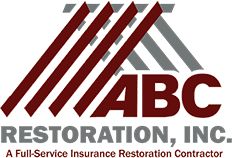Have you experienced water damage from a flood or heavy rainfall?
What are some risks of leaving water damage untreated?
Allowing untreated water to persist in your home can have severe consequences, adversely affecting both the structural integrity of your living space and your health.
- Over time, untreated water can lead to rot in wooden structures, compromising the stability and durability of your home. This degradation may eventually escalate to more serious issues, including collapsing of weakened sections and fostering an environment conducive to mold production.
- Shockingly, after rainfall the contaminants in the grass such as animal waste, fertilizer, and pesticides carry the bacteria, viruses, and harmful; nutrients to humans into bodies of water resulting into our essential water supply contaminated. Nitrogen which serves as essential for plant growth, can cause adverse problems to the body such as gastric, neurological, respiratory, and even cancer.
- Moreover, the exposure to harmful substances present in untreated water poses significant risks to your respiratory system. Prolonged inhalation of mold spores and other contaminants can lead to a range of health issues, including persistent sneezing, coughing, and skin irritations. The inhalation of mold particles may also induce nausea and other discomforting symptoms. These respiratory effects underscore the importance of promptly addressing water-related issues, implementing proper water treatment measures, and conducting thorough inspections to safeguard both the structural integrity of your home and the well-being of its occupants.
However, no worries! This article has a list of suggestions to help you prevent and/or assess the damage.
Step 1: How to identify and address water damage early.
Water damage poses a significant threat to the structural integrity and overall well-being of your home. It can manifest in various ways, and recognizing the early signs is crucial for timely intervention. One prominent indicator is mold growth, characterized by the visible production of spores that often appear as fuzzy or black spots on surfaces throughout your home. Mold not only compromises the aesthetics of your living spaces but also poses health risks, making its prompt removal essential.
Another noticeable sign of water damage is swelling, where walls or ceilings exhibit expansion, causing a noticeable curvature or protrusion. This swelling is indicative of the structural impact of water, potentially compromising the stability of your home. Timely identification and remediation of the source of moisture are imperative to prevent further structural damage.
The presence of a musty smell serves as the third indicator, signaling the onset of dampness that creates an environment conducive to mold development. This distinctive odor often lingers even before visible signs of water damage become apparent, emphasizing the importance of addressing underlying moisture issues promptly. Proper ventilation and moisture control measures can help mitigate this risk.
Discoloration marks the final indicator, as the transition from the original color to a yellow-brown stain signifies the lasting impact of water damage. These stains can be found on walls, ceilings, or other surfaces, indicating the historical presence of moisture and the potential for ongoing issues. Addressing discoloration involves not only cosmetic repairs but also a thorough investigation to identify and rectify the root cause of the water intrusion.
In summary, vigilant observation of these indicators—mold growth, swelling, musty odors, and discoloration—enables homeowners to detect water damage early on. Taking proactive measures to address these signs not only preserves the aesthetics of your home but also safeguards its structural integrity and the well-being of those residing within. Regular inspections, maintenance, and prompt repairs are essential components of a comprehensive strategy to mitigate the risks associated with water damage.
Step 2: After experiencing a flood in your home, it is crucial to take immediate action to minimize damage and ensure safety.
- Contact your insurance company to initiate the claims process and gain insights into coverage for the restoration efforts.
- To expedite the drying process and mitigate further damage, turn off power and open windows to facilitate air circulation.
- Wearing appropriate protective gear, such as gloves and masks, is essential to safeguard against exposure to foreign bacteria and potential injuries during cleanup.
- It is advisable to reach out to a reputable restoration company with years of experience, positive reviews, and proper certifications to handle the intricacies of post-flood restoration, ensuring a thorough and effective recovery process for your home.
Step 3: Common causes of water damage and how to prevent them.
Water damage can result from various sources, with frozen pipes, rainfall, and overflowing sinks or toilets being common culprits. Frozen pipes are a prevalent cause, especially in colder climates, as water inside pipes can freeze and expand, leading to pipe bursts. Heavy rainfall, particularly during storms, can overwhelm drainage systems, causing water to seep into homes and create extensive damage. Additionally, overflowing sinks or toilets, whether due to blockages or malfunctions, can result in water spreading rapidly and impacting surrounding areas. These causes highlight the diverse nature of water damage, emphasizing the importance of preventive measures and prompt interventions to mitigate the potential consequences of these common incidents.
Risks of leaving water damage untreated
Allowing untreated water to persist in your home can have severe consequences, adversely affecting both the structural integrity of your living space and your health.
- Over time, untreated water can lead to rot in wooden structures, compromising the stability and durability of your home. This degradation may eventually escalate to more serious issues, including collapsing of weakened sections and fostering an environment conducive to mold production.
- Moreover, the exposure to harmful substances present in untreated water poses significant risks to your respiratory system. Prolonged inhalation of mold spores and other contaminants can lead to a range of health issues, including persistent sneezing, coughing, and skin irritations. The inhalation of mold particles may also induce nausea and other discomforting symptoms. These respiratory effects underscore the importance of promptly addressing water-related issues, implementing proper water treatment measures, and conducting thorough inspections to safeguard both the structural integrity of your home and the well-being of its occupants.


